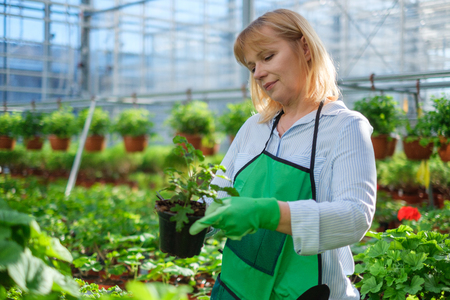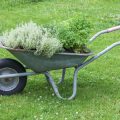1. Benefits of Edible Landscaping
Edible landscaping combines beauty and functionality by integrating food-producing plants into traditional ornamental garden design. Across the U.S., from Californias sunny coastlines to New Englands cooler climates, this approach is gaining popularity for its practical advantages and regional adaptability.
Environmental Benefits
Growing edible plants in your landscape can reduce your carbon footprint. Homegrown fruits, vegetables, and herbs lower the need for store-bought produce, which often travels hundreds or even thousands of miles to reach your plate. Additionally, many edible plants attract pollinators like bees and butterflies, supporting local ecosystems.
Key Environmental Advantages:
| Benefit | Description |
|---|---|
| Reduced Food Miles | Less transportation means lower greenhouse gas emissions. |
| Pollinator Support | Plants like herbs and fruit trees attract beneficial insects. |
| Soil Health | Certain edible plants improve soil quality through nitrogen fixation or organic matter contribution. |
Health Benefits
Having fresh produce just steps from your kitchen encourages healthier eating habits. People are more likely to consume fruits and vegetables when they grow them at home. Plus, you control what goes into your food—no pesticides or preservatives unless you choose to use them.
Health Perks of Edible Plants:
- Access to fresh, nutrient-rich foods
- Encourages outdoor activity and gardening exercise
- Promotes mental wellness through connection with nature
Aesthetic Appeal
You don’t have to sacrifice beauty for function. Many edible plants are just as attractive as ornamental ones. Think of the deep purple of kale leaves, the vibrant red of cherry tomatoes, or the soft blossoms of apple trees in spring—they all add color, texture, and seasonal interest to your yard.
Popular Edible Plants with Visual Appeal:
| Plant | Aesthetic Features |
|---|---|
| Blueberry Bushes | Colorful berries and brilliant fall foliage |
| Swiss Chard | Brightly colored stems in red, yellow, and orange hues |
| Lavender | Purple blooms with a calming scent; also usable in teas and recipes |
A Nationwide Trend with Local Flair
No matter where you live in the U.S., there’s an edible plant that fits your climate and style. From citrus trees in Florida to cold-hardy apples in Minnesota, edible landscaping offers a sustainable way to beautify your outdoor space while putting fresh food on your table.
2. Designing a Functional Edible Garden
Creating an edible garden that’s both beautiful and productive doesn’t have to be complicated. With the right layout, smart plant pairings, and attention to seasonal changes, you can design a space that looks great year-round and puts fresh food on your table.
Plan Your Layout with Purpose
Start by sketching out your garden space. Think about sunlight, water access, and how you’ll move through the area. Use pathways, raised beds, or decorative edging to define zones. For example, herbs can go near the kitchen for quick access, while fruit trees might anchor the back of the yard.
Sample Garden Layout Ideas
| Garden Zone | Suggested Plants | Design Tips |
|---|---|---|
| Front Yard Border | Lettuce, Swiss chard, lavender | Use colorful greens and flowering herbs as ornamentals |
| Backyard Corner | Dwarf fruit trees, berry bushes | Create a mini orchard with mulch paths and seating nearby |
| Patio Containers | Basil, cherry tomatoes, peppers | Use large pots or vertical planters for easy maintenance |
Combine Beauty and Productivity with Smart Plant Pairing
Certain edible plants complement each other visually and functionally. Mixing textures, colors, and heights not only makes your garden more attractive but also helps improve growth and pest control.
Popular Edible Pairings for U.S. Gardens
- Kale + Marigolds: The flowers deter pests while adding bright color next to leafy greens.
- Basil + Tomatoes: Classic companions in both flavor and garden harmony.
- Blueberries + Ornamental Grasses: Add structure and contrast while attracting pollinators.
Add Seasonal Interest Year-Round
A successful edible landscape should look good in every season. Choose a mix of early bloomers, summer producers, fall harvests, and winter-hardy plants to keep your garden engaging.
Seasonal Highlights Chart
| Season | Top Edible Plants | Aesthetic Features |
|---|---|---|
| Spring | Peas, lettuce, strawberries | Tender greens and blossoms add freshness and color |
| Summer | Tomatoes, peppers, basil | Lush foliage and vibrant fruits dominate the view |
| Fall | Kale, pumpkins, apples | Dramatic foliage colors with harvest-ready produce |
| Winter (mild climates) | Cabbage, rosemary, citrus trees (container-grown) | Add texture and evergreen appeal even in cooler months |
Create Focal Points with Edibles
You don’t need to hide your edibles—make them stars of the show! Use a trellis covered in climbing beans as a living wall or plant a row of rainbow chard along your front path for instant curb appeal.
Quick Tips:
- Select colorful varieties like purple basil or golden zucchini for visual interest.
- Mix flowering herbs like thyme or borage with vegetables to attract pollinators.
- Incorporate mulch or decorative stones to tie everything together neatly.
The key is blending form and function so your edible garden feels like a natural extension of your home landscape.
![]()
3. Top Edible Plants for American Gardens
Edible landscaping is a smart way to blend beauty and functionality in your yard. Whether youre working with a small urban garden or a spacious backyard, these ten edible plants are great choices across various USDA hardiness zones. Theyre not only low-maintenance and climate-friendly but also add color, texture, and seasonal interest to your outdoor space.
Top 10 Edible Plants for U.S. Landscapes
| Plant Name | USDA Hardiness Zones | Key Features |
|---|---|---|
| Blueberry (Vaccinium spp.) | 3–8 | Ornamental foliage, spring flowers, antioxidant-rich berries |
| Kale (Brassica oleracea) | 7–10 (annual in cooler zones) | Colorful leaves, cold-hardy, high in nutrients |
| Lavender (Lavandula spp.) | 5–9 | Aromatic, drought-tolerant, edible flowers |
| Thyme (Thymus vulgaris) | 5–9 | Low-growing groundcover, fragrant, culinary herb |
| Sage (Salvia officinalis) | 4–9 | Silvery foliage, bee-friendly blooms, versatile in cooking |
| Swiss Chard (Beta vulgaris subsp. cicla) | 3–10 | Bright stems, long harvest period, ornamental appeal |
| Strawberries (Fragaria × ananassa) | 4–9 | Groundcover option, sweet fruit, pollinator-friendly flowers |
| Dwarf Apple Trees (Malus domestica) | 4–8 | Compact size for small spaces, beautiful spring blooms, fresh fruit |
| Basil (Ocimum basilicum) | 10–11 (annual in most zones) | Aromatic leaves, perfect for borders and containers |
| Lettuce (Lactuca sativa) | 4–9 (cool-season annual) | Easy to grow, fast harvests, many colorful varieties |
Choosing the Right Plants for Your Region
The key to successful edible landscaping is picking plants that match your local climate. Use the USDA Plant Hardiness Zone Map as a guide to ensure you choose varieties that will thrive in your area. For example, blueberries perform well in cooler northern climates, while herbs like thyme and sage excel in drier regions with full sun.
Quick Tips:
- Diversity: Mix perennials like lavender with annuals such as lettuce for year-round interest.
- Aesthetics: Choose plants with appealing textures and colors to enhance curb appeal.
- Sustainability: Opt for native or well-adapted species to reduce water and maintenance needs.
Your Garden Can Be Beautiful and Tasty!
You dont have to choose between beauty and function—these edible plants prove you can have both. With thoughtful selection based on your zone and design goals, youll enjoy a landscape thats as productive as it is attractive.
4. Caring for Your Edible Landscape
Once youve chosen your favorite edible plants for landscaping, the next step is learning how to care for them. Proper maintenance will ensure your garden is not only beautiful but also bountiful. Heres a simple guide to help you with watering, pruning, fertilizing, and pest control tailored specifically for edible gardens in the U.S.
Watering Guidelines
Most edible plants need consistent moisture, especially during the growing season. However, overwatering can lead to root rot and other issues. Heres a quick reference:
| Plant Type | Watering Needs |
|---|---|
| Herbs (e.g., basil, rosemary) | 1–2 inches per week; allow soil to dry slightly between watering |
| Fruits (e.g., blueberries, strawberries) | Keep soil consistently moist but not soggy; mulch helps retain moisture |
| Vegetables (e.g., kale, tomatoes) | Deep water 2–3 times per week depending on heat and rainfall |
Pruning Tips
Regular pruning promotes healthy growth and better yields. It also keeps your landscape tidy.
- Berries: Prune dead or weak canes in late winter or early spring.
- Kale and leafy greens: Harvest outer leaves regularly to encourage new growth.
- Tomatoes: Remove suckers from indeterminate varieties to focus energy on fruit production.
- Lavender and rosemary: Trim lightly after flowering to maintain shape and encourage new shoots.
Fertilization Basics
Your edible plants will thrive with the right nutrients. Use organic options when possible to keep your garden eco-friendly and safe for consumption.
| Plant Type | Fertilizer Type & Schedule |
|---|---|
| Leafy greens (e.g., kale) | Nitrogen-rich fertilizer every 3–4 weeks during growing season |
| Fruit-bearing plants (e.g., strawberries, tomatoes) | Balanced or phosphorus-rich fertilizer every 4–6 weeks |
| Herbs (e.g., thyme, oregano) | Sparingly; too much fertilizer can reduce flavor intensity |
Pest Control for Edible Gardens
Pests can be a challenge in any garden, but with edible plants, its important to use safe methods. Focus on prevention first:
- Companion planting: Marigolds and nasturtiums help deter aphids and beetles naturally.
- Manual removal: Hand-pick larger pests like caterpillars early in the morning.
- Nontoxic sprays: Use insecticidal soap or neem oil thats safe for food crops.
- Avoid chemical pesticides: These can harm beneficial insects and contaminate your produce.
Caring for your edible landscape doesnt have to be complicated. With consistent attention and a few smart practices, you’ll enjoy a productive and attractive garden throughout the season.
5. Harvesting and Using Your Edibles
Once your edible landscape is thriving, the next exciting step is harvesting your homegrown produce. Knowing when and how to pick fruits, vegetables, and herbs ensures the best flavor and continued plant productivity. Below are some easy tips for harvesting and using popular edible landscaping plants in the U.S.
Best Practices for Harvesting
- Tomatoes: Pick when fully colored (red, yellow, or purple depending on variety) and slightly soft to the touch.
- Blueberries: Wait until berries are deep blue and come off easily with a gentle tug.
- Kale & Leafy Greens: Harvest outer leaves regularly to encourage new growth.
- Basil & Mint: Pinch off leaves just above a pair of healthy leaves to promote bushier growth.
- Lemons & Citrus: Twist gently off the branch when fully colored; they don’t continue to ripen after picking.
Creative Culinary Uses
Your garden doesn’t just look good—it can also spice up your kitchen. Here are some tasty ways to enjoy your harvest:
| Plant | Culinary Ideas |
|---|---|
| Lavender | Add dried buds to cookies, lemonade, or herbal teas |
| Rosemary | Use fresh sprigs in roasted meats, potatoes, or infused oils |
| Strawberries | Perfect for smoothies, jams, or homemade ice cream toppings |
| Chard | Sauté with garlic as a side dish or toss into pasta dishes |
| Peppermint | Brew into tea, mix into chocolate desserts, or add to cocktails |
Storage Tips to Keep Produce Fresh Longer
Proper storage helps extend the life of your harvest so you can enjoy it longer. Here are some helpful tips:
- Leafy greens: Wash, dry thoroughly, and store in airtight containers with paper towels to absorb moisture.
- Berries: Don’t wash until ready to eat; keep in breathable containers in the fridge.
- Herbs: Wrap in damp paper towels and place inside plastic bags or jars in the fridge. Alternatively, freeze chopped herbs in olive oil using ice cube trays.
- Citrus fruits: Store at room temperature for up to a week or refrigerate for longer freshness.
- Tomatoes: Keep at room temperature away from direct sunlight; avoid refrigerating unless very ripe.
Preserving Extras
If you’ve got more than you can use right away, consider drying herbs, freezing chopped veggies, or making preserves and pickles. These methods not only reduce waste but also let you enjoy your garden’s bounty year-round.
Quick Tip:
A dehydrator is a great investment for drying herbs like oregano, thyme, and lavender quickly while preserving flavor and aroma.
With thoughtful harvesting and creative usage ideas, your edible landscaping becomes more than just beautiful—it becomes a part of your daily meals and lifestyle.


